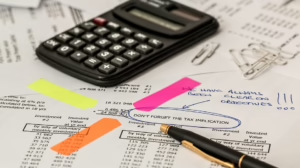Why Logarithms Matter: Applications in Science, Technology, and Everyday Life
[mfn] This article aims to provide a comprehensive understanding of the importance and widespread applications of logarithms, spanning various fields from the natural sciences to everyday scenarios. While a rigorous mathematical treatment is not the primary focus, key concepts are explained in a clear and accessible manner.Logarithms, often perceived as a daunting mathematical concept, are in reality a powerful tool that permeates various aspects of science, technology, and even everyday life. Their ability to simplify complex calculations, reveal hidden relationships, and provide intuitive scales for representing vast ranges of data makes them indispensable in numerous fields. From measuring the intensity of earthquakes to optimizing search algorithms and understanding the intricacies of financial growth, logarithms play a crucial role in shaping our understanding of the world around us.
This article will delve into the fascinating world of logarithms, exploring their fundamental principles and illustrating their profound impact through diverse and compelling applications. We will examine how logarithms are used in scientific research, technological advancements, and even in the seemingly mundane aspects of our daily routines. By understanding the underlying logic and practical utility of logarithms, we can gain a deeper appreciation for their significance and their enduring legacy in shaping the modern world.
I. The Core Concept: Unveiling the Inverse of Exponential Growth
At its core, a logarithm is the inverse operation to exponentiation. Think of it this way: exponentiation answers the question, “What do I get if I raise a number (the base) to a certain power (the exponent)?” Logarithms, on the other hand, answer the question, “To what power must I raise a number (the base) to get a specific result?”
Formally, the logarithm of a number x to the base b is denoted as logb(x) = y. This equation means that by = x. In simpler terms, y is the exponent to which we must raise b to obtain x.
- Base: The base, denoted as b, is the number that is raised to a power. It is typically a positive number, not equal to 1. Common bases include 10 (common logarithm) and e (Euler’s number, approximately 2.71828, natural logarithm).
- Argument: The argument, denoted as x, is the number whose logarithm is being calculated. It must be a positive number.
- Logarithm: The logarithm, denoted as y, is the exponent to which the base must be raised to obtain the argument.
Example:
- log10(100) = 2 because 102 = 100. This means we need to raise 10 to the power of 2 to get 100.
- log2(8) = 3 because 23 = 8. We need to raise 2 to the power of 3 to get 8.
- ln(e) = 1 because e1 = e. The natural logarithm (base e) of e is 1.
Understanding this fundamental relationship between exponentiation and logarithms is crucial for appreciating their applications. The ability to convert between exponential and logarithmic forms allows us to solve equations, simplify calculations, and analyze data in new and insightful ways.
II. Essential Properties of Logarithms: Simplifying Complex Calculations
Logarithms possess several key properties that make them incredibly useful in simplifying complex calculations and manipulating mathematical expressions. These properties stem directly from the properties of exponents and allow us to break down complex problems into more manageable steps.
- Product Rule: logb(x y) = logb(x) + logb(y)
- The logarithm of a product is equal to the sum of the logarithms of the individual factors. This property is invaluable for simplifying multiplications, especially when dealing with large or small numbers.
- Quotient Rule: logb(x / y) = logb(x) – logb(y)
- The logarithm of a quotient is equal to the difference of the logarithms of the numerator and the denominator. This property is useful for simplifying divisions.
- Power Rule: logb(xn) = n logb(x*)
- The logarithm of a number raised to a power is equal to the power multiplied by the logarithm of the number. This property is particularly useful for simplifying exponential expressions and solving equations involving exponents.
- Change of Base Rule: loga(x) = logb(x) / logb(a)
- This rule allows us to convert logarithms from one base to another. This is especially important when using calculators that typically only have built-in functions for base-10 (common logarithm) and base-e (natural logarithm).
These properties, when applied strategically, can significantly reduce the complexity of mathematical operations. For instance, instead of multiplying two very large numbers, we can find their logarithms, add them together, and then find the antilogarithm (the inverse of the logarithm) of the result to obtain the product. This technique was particularly valuable before the advent of calculators and computers.
III. Applications in Science: Unveiling the Secrets of the Natural World
Logarithms are fundamental tools in various scientific disciplines, enabling researchers to analyze data, model phenomena, and gain a deeper understanding of the natural world. Their ability to handle large ranges of values and simplify complex relationships makes them invaluable in fields like physics, chemistry, biology, and geology.
A. Measuring Earthquakes: The Richter Scale
One of the most well-known applications of logarithms is in the Richter scale, which is used to measure the magnitude of earthquakes. The Richter scale is a base-10 logarithmic scale, meaning that each whole number increase on the scale represents a tenfold increase in the amplitude of the seismic waves.
The formula for the Richter magnitude (M) is:
M = log10(A) – log10(A0)
where:
- A is the amplitude of the seismic waves measured by a seismograph.
- A0 is a reference amplitude (a constant value).
This logarithmic scale allows us to represent a wide range of earthquake intensities in a concise and manageable way. An earthquake with a magnitude of 6 on the Richter scale is ten times stronger than an earthquake with a magnitude of 5, and one hundred times stronger than an earthquake with a magnitude of 4. This logarithmic representation provides a clear and intuitive way to compare the relative strength of different earthquakes.
B. Acidity and Alkalinity: The pH Scale
In chemistry, the pH scale is used to measure the acidity or alkalinity of a solution. The pH is defined as the negative base-10 logarithm of the hydrogen ion concentration [H+]:
pH = -log10[H+]
A pH value of 7 indicates a neutral solution, while values below 7 indicate acidity and values above 7 indicate alkalinity. Similar to the Richter scale, the pH scale is logarithmic, which means that a change of one pH unit represents a tenfold change in the hydrogen ion concentration. For example, a solution with a pH of 3 is ten times more acidic than a solution with a pH of 4.
This logarithmic representation is crucial because the hydrogen ion concentration in aqueous solutions can vary over many orders of magnitude. Using a logarithmic scale allows us to represent this wide range of values in a more convenient and understandable manner.
C. Sound Intensity: The Decibel Scale
The loudness of sound is measured using the decibel (dB) scale, which is also a logarithmic scale. The decibel is defined as ten times the base-10 logarithm of the ratio of the sound intensity to a reference intensity:
dB = 10 * log10(I / I0)
where:
- I is the sound intensity.
- I0 is a reference intensity (the threshold of human hearing).
The logarithmic nature of the decibel scale reflects the way humans perceive sound. Our perception of loudness is approximately logarithmic, meaning that a doubling of the sound intensity does not necessarily result in a doubling of the perceived loudness. The decibel scale provides a more accurate representation of how humans experience sound.
Each 10 dB increase represents a tenfold increase in sound intensity, but only a perceived doubling of loudness. For instance, a sound at 60 dB is ten times more intense than a sound at 50 dB, but it is only perceived as being roughly twice as loud. This logarithmic scaling is crucial for understanding and managing noise pollution and protecting hearing health.
D. Radioactive Decay: Half-Life
Radioactive decay, the process by which unstable atomic nuclei lose energy by emitting radiation, is governed by exponential decay. The half-life of a radioactive substance is the time it takes for half of the atoms in a sample to decay. Logarithms are used to calculate half-lives and to model the decay process.
The equation for radioactive decay is:
N(t) = N0 * e-λt
where:
- N(t) is the amount of the radioactive substance remaining after time t.
- N0 is the initial amount of the radioactive substance.
- λ is the decay constant, which is related to the half-life.
The half-life (t1/2) can be calculated using the following formula:
t1/2 = ln(2) / λ
Logarithms are essential for determining the age of geological samples using radiometric dating techniques. By measuring the ratio of parent isotopes to daughter isotopes in a sample and knowing the half-life of the parent isotope, scientists can accurately estimate the age of the sample. This technique has revolutionized our understanding of Earth’s history.
E. Stellar Magnitudes: Brightness of Stars
In astronomy, the brightness of stars is measured using a logarithmic scale called the magnitude scale. This scale originated with the ancient Greek astronomer Hipparchus, who categorized stars based on their apparent brightness as seen with the naked eye. The brightest stars were assigned a magnitude of 1, and the faintest stars were assigned a magnitude of 6.
The modern magnitude scale is a logarithmic scale, where a difference of 5 magnitudes corresponds to a factor of 100 in brightness. The formula relating magnitude (m) to brightness (b) is:
m = -2.5 * log10(b / b0)
where:
- b is the brightness of the star.
- b0 is a reference brightness.
The negative sign in the formula indicates that brighter stars have smaller magnitudes. For example, a star with a magnitude of 1 is 100 times brighter than a star with a magnitude of 6. This logarithmic scale allows astronomers to represent the vast range of stellar brightness in a manageable and intuitive way.
IV. Applications in Technology: Powering the Digital World
Logarithms play a critical role in numerous technological applications, particularly in computer science, signal processing, and information theory. Their ability to compress data, analyze signals, and optimize algorithms makes them indispensable in the digital age.
A. Computer Science: Algorithm Analysis and Data Structures
In computer science, logarithms are frequently used in the analysis of algorithms and the design of data structures. The time complexity of an algorithm, which describes how the execution time of the algorithm grows as the input size increases, is often expressed using logarithmic functions.
- Binary Search: The binary search algorithm, which efficiently searches for a specific value in a sorted array, has a time complexity of O(log n), where n is the size of the array. This logarithmic complexity means that the search time increases very slowly as the array size grows, making binary search a highly efficient algorithm for searching large datasets.
- Trees: Tree data structures, such as binary search trees and balanced trees, also rely heavily on logarithmic principles. The height of a balanced tree is proportional to the logarithm of the number of nodes in the tree, which ensures that search, insertion, and deletion operations can be performed efficiently in O(log n) time.
Logarithms are also used in data compression algorithms to reduce the size of data files. Huffman coding, a popular data compression technique, uses logarithmic principles to assign shorter codes to more frequent symbols and longer codes to less frequent symbols, resulting in a significant reduction in file size.
B. Signal Processing: Audio and Image Compression
In signal processing, logarithms are used in audio and image compression algorithms to reduce the amount of data required to represent audio and video signals. Psychoacoustic models, which are used in audio compression algorithms such as MP3, exploit the logarithmic nature of human hearing to discard information that is not perceptually relevant.
Logarithmic transformations, such as the discrete cosine transform (DCT), are used in image compression algorithms such as JPEG to convert image data into a form that is more easily compressed. These transformations concentrate the energy of the image into a small number of coefficients, which can then be quantized and encoded efficiently.
C. Information Theory: Measuring Information Content
In information theory, logarithms are used to measure the information content of a message. The amount of information conveyed by a message is related to the probability of that message occurring. The less probable a message is, the more information it conveys.
The Shannon entropy, a fundamental concept in information theory, measures the average amount of information contained in a message. The entropy is defined as the negative sum of the probabilities of each possible message multiplied by the logarithm of the probability of that message.
Entropy = – Σ p(i) * log2(p(i))
where:
- p(i) is the probability of the i-th message.
The logarithm is used in the entropy formula because it provides a measure of the number of bits required to encode the message. Messages with high entropy require more bits to encode than messages with low entropy.
D. Cryptography: Ensuring Secure Communication
Logarithms, particularly in the context of discrete logarithms, play a critical role in modern cryptography. The discrete logarithm problem (DLP) is the problem of finding the exponent x in the equation gx ≡ h (mod p), where g, h, and p are known.
The difficulty of solving the DLP forms the basis for many cryptographic algorithms, including the Diffie-Hellman key exchange and the ElGamal encryption scheme. These algorithms rely on the fact that it is computationally easy to compute exponentiation modulo a prime number, but it is computationally difficult to compute the discrete logarithm.
By exploiting the asymmetry between exponentiation and discrete logarithms, these cryptographic algorithms enable secure communication and data storage in the digital world.
E. Search Algorithms: Optimizing Information Retrieval
Logarithms are fundamental to the efficiency of many search algorithms, particularly those used in databases and web search engines. Consider a sorted database containing millions of records. A linear search would require, on average, examining half of the records to find a specific entry, which is highly inefficient.
However, algorithms like binary search, which leverage the sorted nature of the data, can find a specific entry in logarithmic time. With each comparison, the search space is halved, drastically reducing the number of comparisons required. For a database with a million records, binary search would require, at most, around 20 comparisons (log2(1,000,000) ≈ 20), a significant improvement over the linear search.
This logarithmic scaling is crucial for handling the massive datasets that are common in modern applications, such as web search engines. Without logarithmic algorithms, finding information on the internet would be a prohibitively slow process.
V. Applications in Everyday Life: Recognizing Logarithms in Unexpected Places
While logarithms may seem like an abstract mathematical concept confined to the realms of science and technology, they also manifest themselves in more subtle ways in our everyday lives. Understanding these applications can provide a deeper appreciation for the pervasive influence of logarithms.
A. Financial Growth: Compound Interest and Investment Returns
The concept of compound interest, where interest is earned not only on the principal amount but also on accumulated interest, is fundamentally linked to exponential growth. Logarithms are used to calculate the time it takes for an investment to reach a certain value, given a specific interest rate.
The formula for compound interest is:
A = P (1 + r/n)nt
where:
- A is the future value of the investment/loan, including interest
- P is the principal investment amount (the initial deposit or loan amount)
- r is the annual interest rate (as a decimal)
- n is the number of times that interest is compounded per year
- t is the number of years the money is invested or borrowed for
To find the time (t) it takes for the investment to reach a certain value, we can use logarithms:
t = ln(A/P) / (n * ln(1 + r/n))
Logarithms allow us to solve for the exponent (t) in the compound interest formula, enabling us to make informed financial decisions about investments and loans. Understanding the logarithmic relationship between time and investment growth is crucial for long-term financial planning.
B. Maps and Navigation: Representing the Earth on a Flat Surface
Maps are essential tools for navigation, but representing the curved surface of the Earth on a flat piece of paper is a challenging task. Map projections, which are used to transform the Earth’s surface onto a plane, inevitably introduce distortions.
Some map projections, such as the Mercator projection, use logarithmic scaling to minimize distortions in certain areas. While the Mercator projection preserves angles, it significantly distorts areas, particularly at high latitudes. Greenland, for example, appears much larger than it actually is on a Mercator projection.
Other map projections use different mathematical techniques, including logarithmic transformations, to balance the trade-offs between different types of distortion. Understanding the principles behind map projections, including the use of logarithms, is essential for interpreting maps accurately and appreciating the challenges of representing the Earth on a flat surface.
C. Photography: Exposure and Dynamic Range
In photography, logarithms are used to understand and control exposure, which is the amount of light that reaches the camera sensor. The amount of light that enters the camera is determined by the aperture (f-stop) and the shutter speed.
The f-stop scale is a logarithmic scale, where each whole number increase in f-stop represents a halving of the amount of light entering the camera. For example, an aperture of f/2.8 lets in twice as much light as an aperture of f/4.
The dynamic range of a camera sensor, which is the range of light intensities that the sensor can capture, is also often expressed in logarithmic units (stops). A sensor with a wider dynamic range can capture more detail in both the bright and dark areas of an image. Understanding the logarithmic relationships between aperture, shutter speed, and dynamic range is crucial for taking well-exposed and visually appealing photographs.
D. Perceptual Scales: How We Experience the World
As previously mentioned with sound, many of our sensory experiences are perceived on a logarithmic scale. This means that our brains process changes in stimuli relative to the current level of stimulation, rather than in absolute terms.
This logarithmic perception has several implications. For example, it allows us to perceive a wide range of stimuli, from very faint to very intense. It also means that we are more sensitive to small changes in stimuli when the overall level of stimulation is low.
Understanding the logarithmic nature of human perception is crucial in many fields, including psychology, marketing, and user interface design. By designing products and experiences that are tailored to the way humans perceive the world, we can create more effective and enjoyable interactions.
VI. The Future of Logarithms: Continued Relevance in a Changing World
Despite the advent of powerful computers and sophisticated software, logarithms remain a fundamental tool in science, technology, and mathematics. Their ability to simplify complex calculations, reveal hidden relationships, and provide intuitive scales for representing vast ranges of data ensures their continued relevance in the 21st century.
As data sets continue to grow in size and complexity, the need for efficient algorithms and data structures will only increase. Logarithmic algorithms, such as binary search and tree-based data structures, will continue to play a crucial role in managing and analyzing these massive datasets.
Furthermore, the increasing importance of machine learning and artificial intelligence will further drive the demand for logarithmic techniques. Logarithmic transformations are often used to pre-process data before it is fed into machine learning algorithms, and logarithmic functions are used in the design of neural networks.
In conclusion, logarithms are not just a relic of the past, but a powerful and versatile tool that will continue to shape the future of science, technology, and our understanding of the world. Their ability to simplify complexity and reveal hidden patterns makes them an indispensable asset in an increasingly data-driven world. From understanding the magnitude of earthquakes to optimizing search algorithms and comprehending the intricacies of financial growth, logarithms remain a cornerstone of modern scientific and technological progress. By embracing the power of logarithms, we can unlock new insights and address the challenges of the future with greater clarity and precision.


























Add Comment